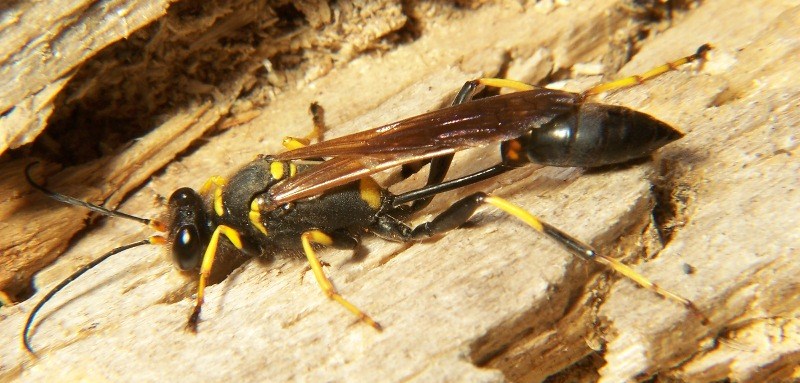Nutrition
Sceliphron caementarium feed on the nectar of flowers
when they are adults. The most common flowers they feed on are the
parsnip and water parsnip (Resh and Carde 2003). They are also found to visit hummingbird
feeders (O'Neill 2011).
When the female is building her nest, she captures spiders to put in each cell of the nest for the developing larva to feed on (University of Iowa Entomology 2012). Sceliphron caementarium has been observed capturing and feeding on orb weaving spiders such as Araneus cornutus (Eberhard 1970). They generally prey on spiders of the family Araneidae and those that are found on plants (Polidori et al. 2007). The size of the prey varies greatly but usually falls between 4 and 6 mm in length (Polidori et al. 2007).
There has been many studies conducted to figure out how black and yellow mud dauber wasp chooses her prey. The general consensus is that visual cues are used to locate a spot where prey are found. Once the wasp is at a spot with prey, chemical and visual cues are used. Other factors including sex, morphology, age and mass of the spider come into play once the wasp specifically locates a spider. In general, Sceliphron caementarium is seen capturing spiders in 2D webs rather than 3D webs because of chemical cues specific to 2D webs (Ulma 2010). Once a prey has been chosen, the wasp will hit the web to make the spider fall out onto the ground (Blackledge and Pickett 2000). The female then grabs the spider with her mandibles and front pair of legs, and she stings the spider until it is paralyzed but not dead (Eberhard 1970). She will then take the spider to the nest to put in the individual cells.
Go to the reproduction page to see how new black and yellow mud dauber wasps come to be!
